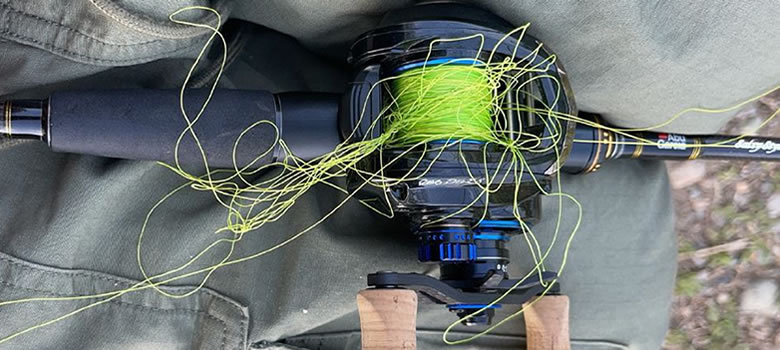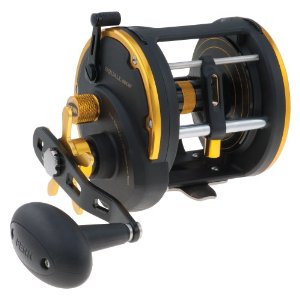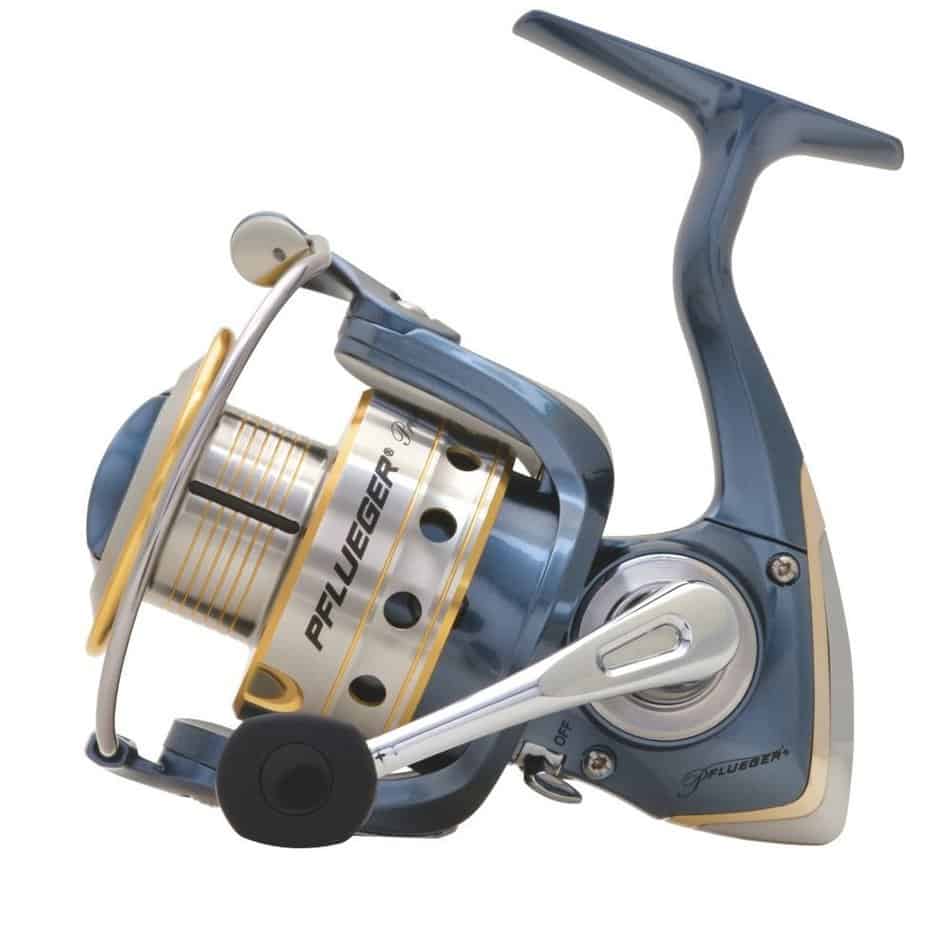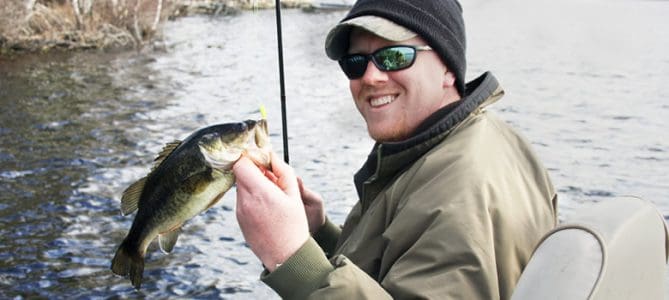If you buy via a link on this page, we may receive a commission, at no extra cost to you.Learn more
You invest hundreds of dollars in finding the best gear and countless hours planning your next fishing trip just to spend the rest of the day untangling the line from the reel.

While you untangle the reel for the fifth time, you might wonder why does my fishing reel keep getting tangled? Why does this always happen to me? The prime reason is too much slack on the line or over-spooling the reel.
Poor quality line, line memory, and loose brakes are other common reasons for tangled reels.
Stay with us and learn why this happens. But more importantly, how to prevent tangled fishing lines!
What is a Wind Knot?
Also known as headaches, this is a painful phenomenon that happens when the line gets tangled during a cast. Hence the name.
The situation is most common on spinning and baitcasting reels. But you might wonder why reels get tangled.
The speed difference between the line that’s getting out of the spool and the end of the line is the main reason.
You see, when you cast, the line develops maximum speed close to the reel. Then it decelerates as it passes through the line guides. Depending on the difference, the line coming out from the reel overlaps with the rest of the line. Thus, creating what we also know as bird nests.
Why Does a Fishing Reel Get Tangled?
Wind knots or bird nests can potentially ruin your fishing trip. I mean, the time goes by quickly as you try to untangle the fishing line. Sometimes, it is so messy that cutting the line is the only solution. Thus, wasting more time tying the hook or lure again.
Therefore, it pays to understand the situations that make bird nets more likely. Let’s explore them.
Too Much Slack on the Line
The prime reason behind line tangles is leaving too much slack on the line. This happens for a wide range of reasons such as:
Using light terminal tackle compared to the line.
This includes sinkers, hooks, and lures. But going too heavy is not the answer either! Your line is more likely to snap. Most rod brands often label their rods with compatible lines and hook sizes. In addition, you should always pair your terminal tackle in accordance with the fishing line you are using. This way, you will avoid any gear mismatches that could increase bird nests.
Casting into the wind
Although it might look obvious, many beginners are often cast into the wind.
Despite what you feel, wind possesses resistance to movement. The degree of resistance depends on the wind’s speed. As a result, the line coming out of the spool is more likely to overlap itself. As you might have guessed, strong winds mean more resistance.
So, avoid casting into the wind altogether.
Avoid casting knots
By this, we mean the knots we tend to use to join two lines or a leader and the line together.
Knots are more likely to come in contact with the line guides and get stuck. Consequently, it will decrease the line speed, causing the problem we mentioned before.
We suggest avoiding reeling knots in. Use slim knots if this is not possible.
Don’t Cast Too Hard
Casting distance is not only achieved by brute force. The technique also plays its role.
Casting too hard will make the spool rotate even faster, translating into the same issue as before.
Furthermore, you can break the rod’s tip off if you cast it too hard or put unnecessary strain on your arms.
Not Enough Tension on the Line
Fishing is a physically intense activity. People don’t often realize this. You need to jank the rod and crank the handle constantly, which takes effort.
However, there can’t be any slack on the line. Otherwise, it makes it more likely to get snagged into something.
Keeping the line tight makes it difficult for the fish to shake the hook as well, double the prize for the same effort.
Over Spooling the Reel
Another common culprit is wrapping too much line on the reel. First-time anglers are more likely to do this, thinking that having more yards of the line will increase their chances of landing a big fish.
However, all fishing reels show the maximum capacity for several fishing lines according to their weight. Exceeding this limit is asking for trouble.
Nevertheless, we recommend leaving some free capacity just in case. For example, if your reel can hold 150 yards, we suggest spooling around 120. This way, the line is less likely to fall from the spool. Plus, the line will have more space as you reel it in.
We also advise against using incompatible line weights. For example, if your reel does not support a 20-pound test line, don’t force it. The performance will drop, and you might face several other problems.
This applies to both spinning and baitcasting reels. However, the consequences are more severe with the first.
Line Memory
Line memory is another, often overlooked, reason. Anglers define line memory as the ability a certain line has to retain the shape of the spool. Naturally, this is a problem, as the line is more likely to form coils as it gets out on the spool. In addition, the line speed will decrease even further as it stumbles across the line guides.
That’s why we suggest using fresh fishing line after some time. This also applies if the line sits under the sun for prolonged periods.
How to Untangle a Fishing Line?
You untangle it as with your laces or old headphones. It is a long process that requires a lot of patience, especially if you tighten the line.
There are situations when you can’t untangle the fishing reel, or it will take too long. Here, cutting the line is the only solution. So, how can you tell if you can save the line?
Here we recommend taking the tangled section and checking for loose sections where you can squeeze the line through. We recommend cutting the line if you have to stretch the sections to do it.
Why? Well, stretching the line only weakens it, making it more likely to snap under pressure.
Tangled Fishing Reel: An Angler’s Nightmare
Your fishing reel will get tangled at some point in your fishing career. We all have to face this issue, whether we like it or not, as it is impossible to avoid this problem altogether.
However, there is silver lightning. You can decrease the likelihood. First, you must understand why fishing reels get tangled, and then work to avoid those triggers.
Too much slack on the line, line memory, and over spooling the reel are the most common reasons for a tangled fishing reel. Here we’ve talked about each one and, more importantly, shown you how to avoid it.



